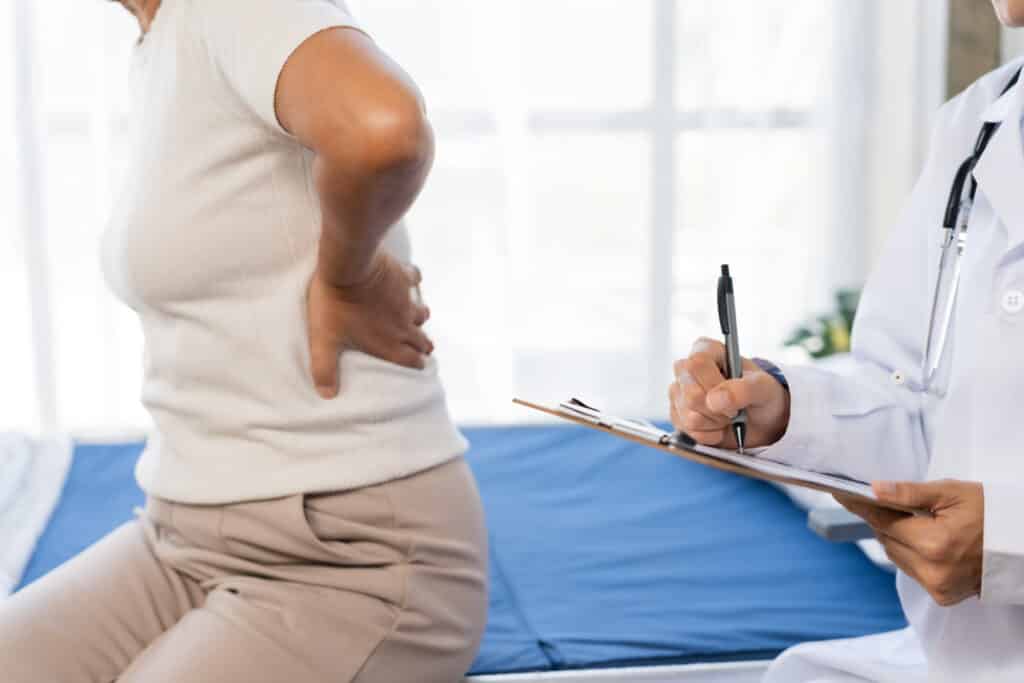Hip osteoarthritis is a condition in which the cartilage that cushions your joints gradually breaks down. In the hip joint (also known as coxarthrosis), this leads to bone-on-bone contact, causing pain, stiffness, inflammation, and reduced mobility over time.

At Indiana Orthopedic Institute, we specialize in diagnosing and treating conditions like hip OA helping patients regain mobility, reduce pain, and return to the activities they love.
“Hip osteoarthritis doesn’t just affect joints, it affects lives. Our goal is to preserve function, reduce pain, and help patients stay active for as long as possible, whether through therapy, injections, or surgical intervention when needed,” said Dr. Meding, hip and knee replacement surgeon at IOI.
Common symptoms of hip OA include stiffness (especially in the morning or after sitting), difficulty walking, climbing stairs, or putting on shoes, and a grinding or clicking sensation when moving the hip. Hip OA is the second most common large joint osteoarthritis after the knee, affecting millions globally and many across Indiana.
What Causes Hip Osteoarthritis?
Hip OA usually results from a combination of factors:
- Age – Wear and tear accumulate over time.
- Previous joint injuries – Past trauma or repetitive stress increases risk.
- Excess weight – Extra body weight puts more pressure on the hip joint.
- Genetics & bone structure – Hip shape and family history can play a role.
- Posture & gait – Poor alignment or biomechanics can accelerate wear.
- Other conditions – Diabetes, chronic inflammation, and metabolic issues can contribute.
While aging is the most common risk factor, many people have multiple contributors to hip OA.
Stages of Hip Osteoarthritis
Hip osteoarthritis progresses gradually through three main stages.
In the early stage, cartilage begins to wear down, causing mild discomfort, often after activity. The moderate stage involves more cartilage loss and possible bone spurs, leading to frequent pain, stiffness, and difficulty with daily movements. By the advanced stage, cartilage is severely worn, the joint may be deformed, and patients often experience constant pain and limited mobility.
At Indiana Orthopedic Institute, we assess each stage carefully to create a treatment plan tailored to your condition.
Diagnosing and Treating Hip OA at Indiana Orthopedic Institute
If you suspect hip osteoarthritis, our specialists at Indiana Orthopedic Institute provide a thorough evaluation that includes your medical history, a physical exam to assess strength, gait, and range of motion, and imaging such as X-rays or, when needed, MRI or CT scans. Lab tests may also be used to rule out other joint conditions. We use the Kellgren–Lawrence grading system to determine severity and guide your treatment plan.
Treatment options range from conservative care to surgical solutions. Non-surgical approaches include physical therapy to strengthen muscles and improve joint function, anti-inflammatory medications, corticosteroid injections for temporary relief, weight management strategies, and assistive devices or lifestyle modifications like low-impact exercise. Our team works closely with you to develop a personalized plan focused on reducing pain, improving mobility, and supporting long-term joint health.
Surgical Options: Total Hip Replacement
When conservative treatments are no longer effective, total hip replacement (THR) may be the best option. At IOI, we tailor our approach to each individual’s unique experience.
- We use advanced surgical techniques and high-quality implants
- THR can significantly reduce pain and restore function
- Many hip replacements last 15–25 years or more
Recovery depends on a patient’s overall health and age, pre-surgery joint condition, surgical technique and implant type, and commitment to postoperative rehabilitation.
Our dedicated care team supports patients throughout the surgical journey, from pre-op education to post-op physical therapy.
Treatment Comparison Table
| Treatment | Benefits | Limitations | Best For |
| Medications (NSAIDs) | Reduces inflammation and pain | Long-term risks (GI, heart) | Symptom relief |
| Injections | Temporary relief | Short-term effect | Flare-ups or moderate OA |
| Assistive Devices | Maintains mobility | Doesn’t stop disease | All stages |
| Physical Therapy | Improves strength and flexibility | Requires time and consistency | Early to moderate OA |
| Hip Replacement | Restores function and relieves pain | Surgical risks and recovery | Advanced OA |
Next Steps: What You Can Do at IOI
If hip pain is interfering with your daily life, don’t wait. The team at Indiana Orthopedic Institute is here to help.
We have locations and partnerships throughout Indiana, making expert care accessible across the state.
